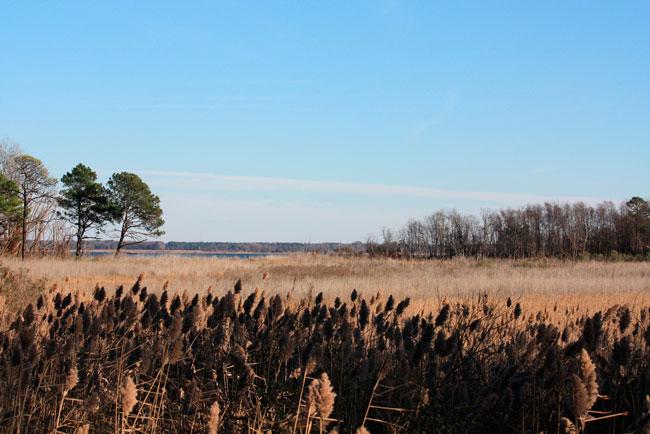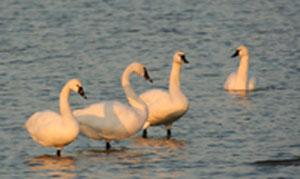The Chesapeake Bay watershed encompasses 64,000 square miles where more than 17 million people live and work. That translates into roads, parking lots, malls, schools, houses and office buildings.
In this increasingly concrete world, we need wild places to explore and discover nature. These places also help to calm our unusually busy agendas and reflect upon our lives.
Our wildlife needs these natural areas, too. The forests, meadows, wetlands, islands, shorelines, creeks and rivers provide our wildlife with food, water, and nesting and resting places. These natural areas, also known as habitats, are critical to the survival of native plants, insects, reptiles, amphibians, birds, mammals and more.

Eastern Neck National Wildlife Refuge near Rock Hall.
The National Wildlife Refuge system is a network of public lands set aside specifically for the conservation of fish, wildlife and plants, including endangered and threatened species. Prairies, wetlands and woodlands have been protected and restored, providing much needed habitat for the United States’ wildlife through the National Wildlife Refuge system.
National Wildlife Refuges contain a priceless gift – the heritage of a wild United States. Wild lands and the perpetuation of diverse and abundant wildlife are essential to the quality of life in the United States.
Established in 1903, the National Wildlife Refuge system provides habitat for more than 700 species of birds, 220 species of mammals, 250 reptile and amphibian species, more than 200 species of fish, and countless species of invertebrates and plants.
Nearly 280 threatened or endangered species are found on national wildlife refuges, where they often begin their recovery or hold their own against extinction.
Refuges are great for people, too. They provide opportunities to see wildlife in a natural environment.
Many refuges have interpretive foot and vehicular trails. Birding, hiking, bicycling, canoeing, kayaking, wildlife observation and photography are some of the available recreational activities. Visitor centers offer exhibits, videos and slide shows.
About 98 percent of the land in the National Wildlife Refuge system is open to the public for wildlife-dependent education and recreation. More than 50 percent of the refuges offer recreational hunting and fishing. Refuge visitors include hunters, anglers, wildlife watchers, school groups and photographers.
Recent legislation, the National Wildlife Refuge System Improvement Act, directed expanding opportunities for several public uses including wildlife photography, fishing, hunting, wildlife observation, environmental education and interpretation.
These activities help build an understanding and appreciation for wildlife, habitat and the role management plays in the stewardship of U.S. resources Kathy Reshetiloff is with the U.S. Fish and Wildlife Service’s Chesapeake Bay Field Office in Annapolis.
By Kathy Reshetiloff
Bay Journal News Service



Elizabeth Hill says
Univ. of MD Extension, DNR, Kent Soil Conservation District and Sassafras River Association spent the past 2 days (Sept 30/Oct 1) with all the Kent County Public School 4th graders at Eastern Neck Island National Wildlife Refuge. This is an annual event to teach students about agriculture, soils, wildlife, and aquatic life in a beautiful outdoor setting. We even had an incredible visit from a Blue Jay eating seeds from UME Hortiulturist Sabine Harvey, while the kids were there! ENI is a treasure and should be enjoyed and experienced by everyone!